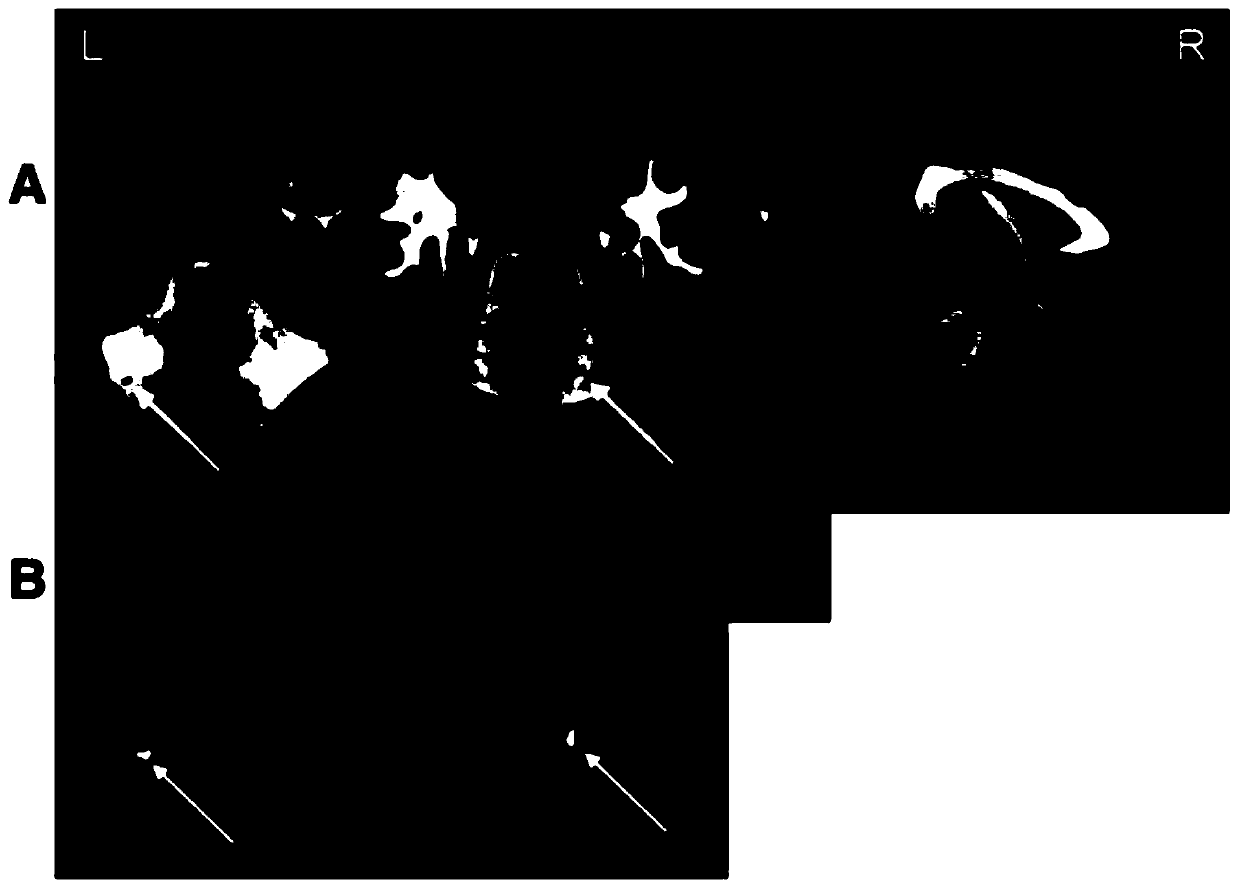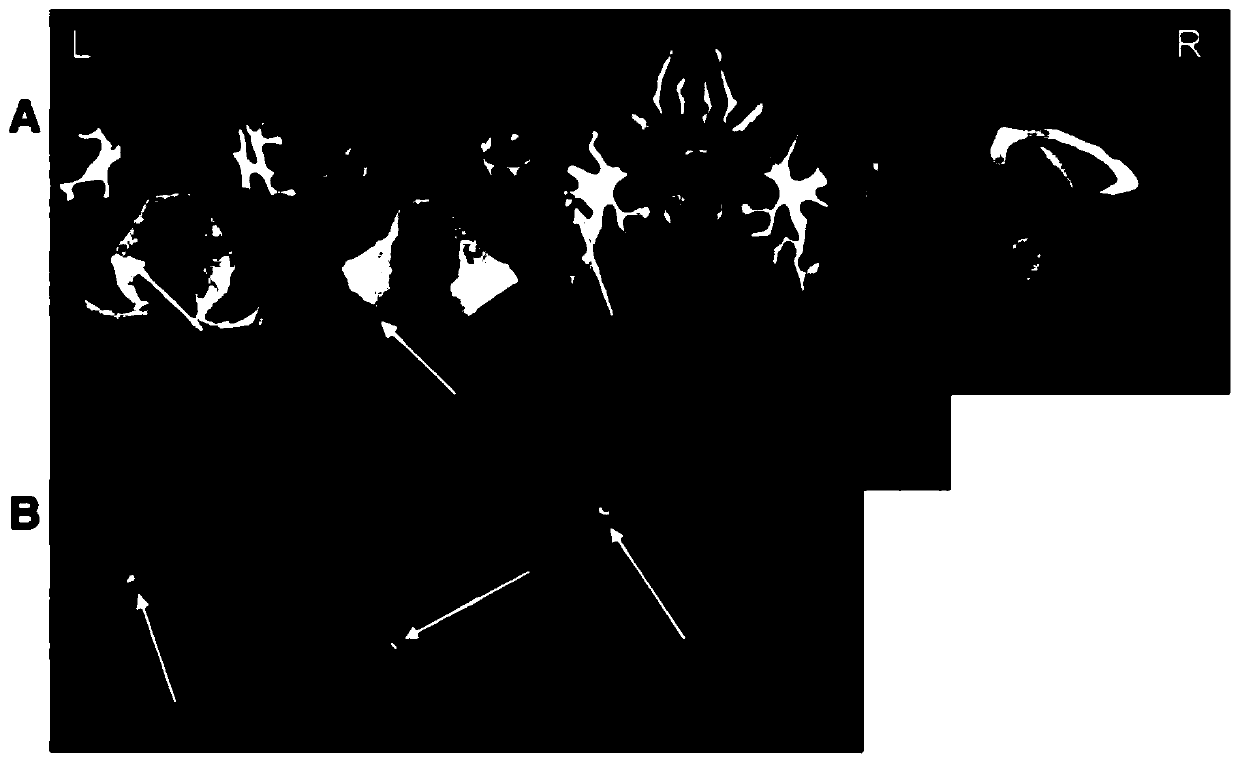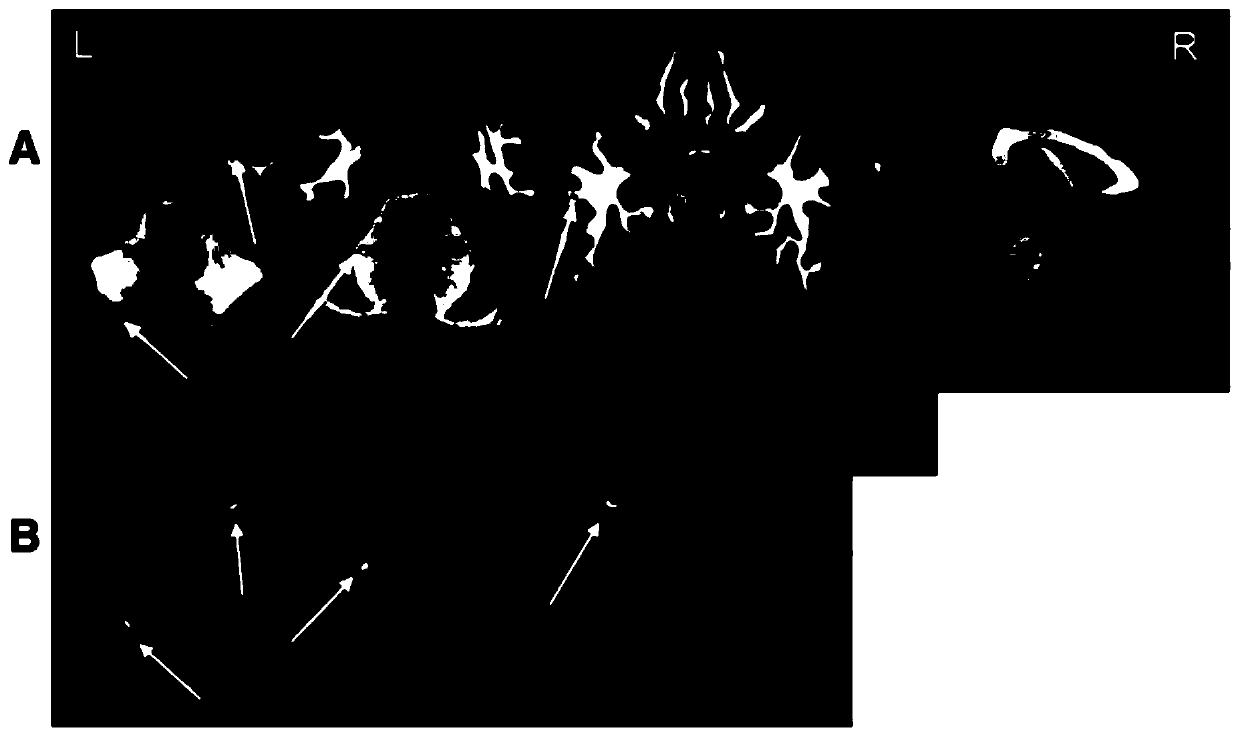Multimodal molecular imaging strategy for radiation-induced brain injury biomarkers after nasopharyngeal carcinoma radiotherapy
A radiation brain injury and biomarker technology, applied in the field of medical detection, can solve the problems of unknown physiology and pathology of radiation brain injury
- Summary
- Abstract
- Description
- Claims
- Application Information
AI Technical Summary
Problems solved by technology
Method used
Image
Examples
Embodiment Construction
[0026]This study included 77 patients (54 males and 23 females; aged between 25 and 59 years; mean age 45 years) with pathologically confirmed nasopharyngeal carcinoma and 67 normal controls. All patients received fractionated radiotherapy for the first time with three-dimensional conformal and intensity-adjusted techniques (total dose / fraction dose / exposure, 66-74Gy / 1.8-2.0Gy / 30-35 fractions). The patient was confirmed to be free of intracranial tumors or intracranial invasion prior to MRI examination. Patients with hypertension, diabetes, heart disease, intracerebral white matter degeneration, or vascular disease were excluded. The normal subjects constituted the control group, and the same exclusion criteria as the radical radiotherapy subjects were applied to the control group (ie, hypertension, diabetes, heart disease, intracerebral white matter degeneration, vascular lesions). Traditionally, definitive radiotherapy-induced neurological injury can be described as acute i...
PUM
 Login to View More
Login to View More Abstract
Description
Claims
Application Information
 Login to View More
Login to View More - R&D
- Intellectual Property
- Life Sciences
- Materials
- Tech Scout
- Unparalleled Data Quality
- Higher Quality Content
- 60% Fewer Hallucinations
Browse by: Latest US Patents, China's latest patents, Technical Efficacy Thesaurus, Application Domain, Technology Topic, Popular Technical Reports.
© 2025 PatSnap. All rights reserved.Legal|Privacy policy|Modern Slavery Act Transparency Statement|Sitemap|About US| Contact US: help@patsnap.com



